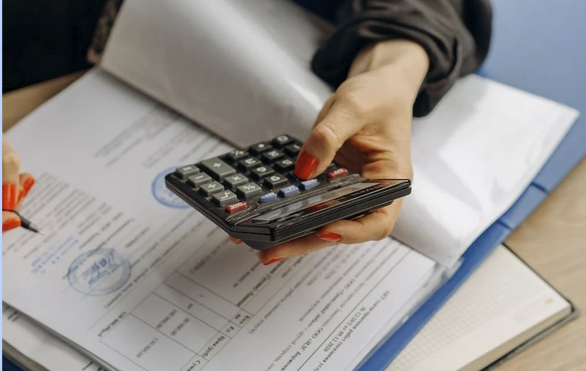We compared the Labor and Coalition’s income tax proposals to see who benefits most
- Written by John Hawkins, Senior Lecturer, Canberra School of Politics, Economics and Society, University of Canberra

We now have the competing bids for our votes by the alternative governments on income tax policy.
From Labor, future cuts to the lowest marginal tax rate and new standard deductions for work expenses. From the Coalition, a one-off return to a tax offset for low and middle income earners that was previously nicknamed the “lamington”[1].
Our modelling shows slightly higher benefits for low- and middle-income earners from the Coalition’s proposals compared to Labor’s.
Labor’s drip-fed tax policies
The Labor government announced its main tax proposal in the recent budget. It is a permanent cut in the lowest marginal tax rate.
Currently, the tax rate on income between A$18,201 and $45,000 is 16%. This will drop to 15% from July 2026 and then to 14% from July 2027.
This will reduce the tax paid by taxpayers in all income brackets, with most receiving $536 a year in relief. But it is proportionately larger for those on lower incomes.
Read more: Tax cuts are coming, but not soon, in a cautious budget[2]
At the weekend, the government announced[3] an additional measure: allowing everyone to claim a standard tax deduction of $1,000 instead of claiming individual work-related expenses.
Those with expenses over $1,000 can continue to claim their deduction in the current way. The government estimates this measure will assist 39% of taxpayers. The average relief for those benefiting will be $205 per year.
Coalition’s revived tax offset
Also at the weekend, the Coalition released[4] its tax policies. It is essentially proposing the reintroduction of the Low and Middle Income Tax Offset (“LMITO”, which led to the nickname the “lamington”), for one financial year only.
Read more: The Low and Middle Income Tax Offset has been extended yet again. It delivers help neither when nor where it's needed[5]
The Morrison government introduced a low- and middle-income tax offset in the 2018-19 tax year. It was subsequently extended, but then abolished by the Labor government.
It is now called the Cost of Living Tax Offset. Those with taxable incomes between $48,000 and $104,000 will get a one-off rebate of $1,200. Other taxpayers with incomes below $144,000 will get smaller rebates.
Read more: Dutton to offer targeted income tax offset of up to $1,200[6]
Although Dutton was critical of Labor’s income tax cuts for not starting until 2026, the one-off rebate would also not be paid until mid-2026.
Dutton has not explained why he said[7] three weeks ago that the budget position would not allow for income tax cuts but now he thinks it does.
Who benefits most from the competing proposals?
We have estimated the distribution of the benefits from Labor’s proposed tax cut (but not the instant tax deduction) and the Coalition’s one-year tax offset.
Given a federal election is held every three years, the estimates are provided up to mid-2028. This resulted in a slightly higher cumulative figure of around $10 billion for the Labor proposal (over two years) and $11 billion for the Coalition proposal (over one year). This is slightly higher than the Coalition’s own estimate.
The following charts show disposable household income deciles from the poorest 10% to the 10% with the highest incomes. This is household income that has been adjusted to allow comparison of income levels between households of differing size and composition.
The chart indicates slightly higher benefits from the Coalition for households in the lowest and second-lowest income groups. This may be an overestimate as it assumes those earning less than $37,000 get a $265 benefit. The policy is rather vague on this, saying only that they would get “up to” $265.
The Coalition proposal provides a somewhat higher benefit for middle income earners, but withdraws it for those on higher incomes.
All individual taxpayers earning above $45,000 will receive the same benefit from the Labor proposal. But differences in household composition mean that the benefit calculated by household continues to rise somewhat.
The Coalition proposal gives no benefits to individuals earning over $144,000. But even the households in the highest income groups have some members earning less than this, such as adult children living at home. So the average household with a high income will still get some benefit.
In terms of family type, the Coalition proposal will give less benefit than the Labor plan to couples with children but more to other groups, especially single parents.
From these distributions of both income level and family type, it seems that neither party has a clear plan to target their own traditional constituencies with these policies. The Coalition proposal may be targeting households in outer suburban marginal seats which tend to have more low and middle income households.
How much will they cost?
According to the budget papers, Labor’s cut to the lowest marginal rate will cost $3 billion in 2026-27, $6.7 billion in 2027-28 and $7.4 billion in 2028-29.
The cost[8] of the instant tax deduction will be $2.4 billion over four years.
The Coalition has claimed[9] its rebate would cost $10 billion in 2026-27.
This would of course increase if a Dutton government feels under pressure to extend the new rebate, as happened with the LMITO.
Disappointing for democratic decision-making
It is very disappointing that both major parties are releasing key policies on taxation and housing literally only days before people start voting.
Previous leaders like Robert Menzies (when opposition leader from 1943 to 1949) and Gough Whitlam (1967 to 1972) would spend years developing, then explaining and advocating for policies. This gave time for them to be scrutinised, and if necessary revised, before voters were asked to pass judgement.
The proposals are also disappointing for those arguing for substantial tax reform[10].
References
- ^ the “lamington” (theconversation.com)
- ^ Tax cuts are coming, but not soon, in a cautious budget (theconversation.com)
- ^ announced (alp.org.au)
- ^ released (www.liberal.org.au)
- ^ The Low and Middle Income Tax Offset has been extended yet again. It delivers help neither when nor where it's needed (theconversation.com)
- ^ Dutton to offer targeted income tax offset of up to $1,200 (theconversation.com)
- ^ said (www.abc.net.au)
- ^ cost (alp.org.au)
- ^ claimed (www.liberal.org.au)
- ^ substantial tax reform (www.abc.net.au)
















